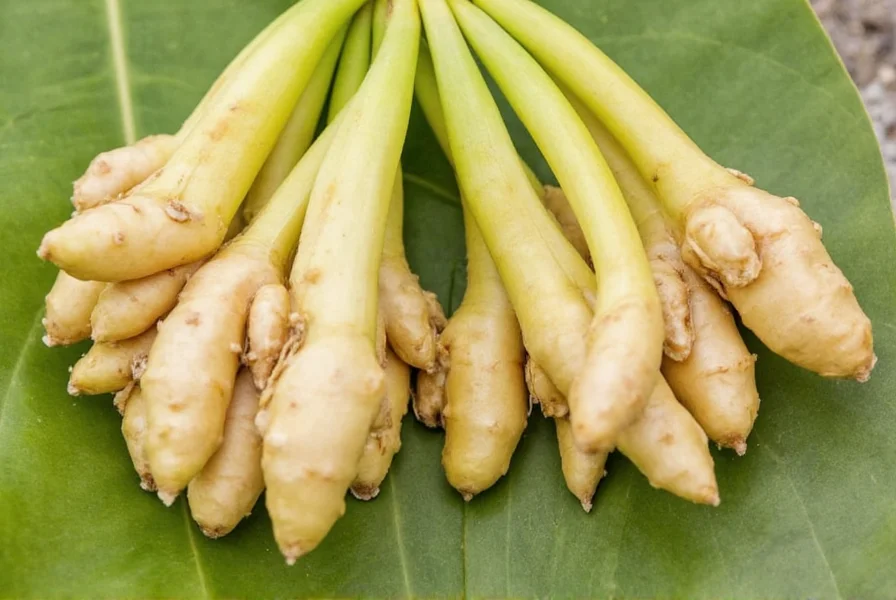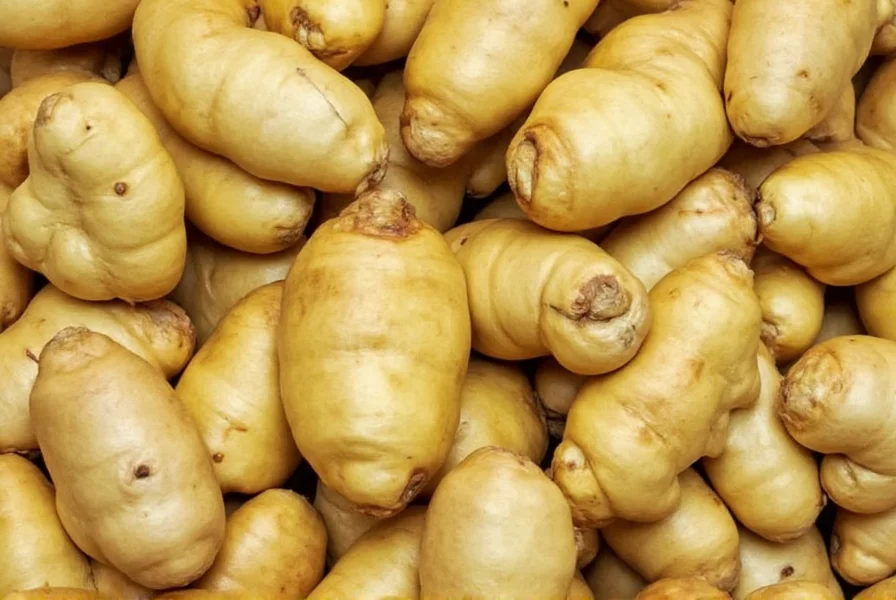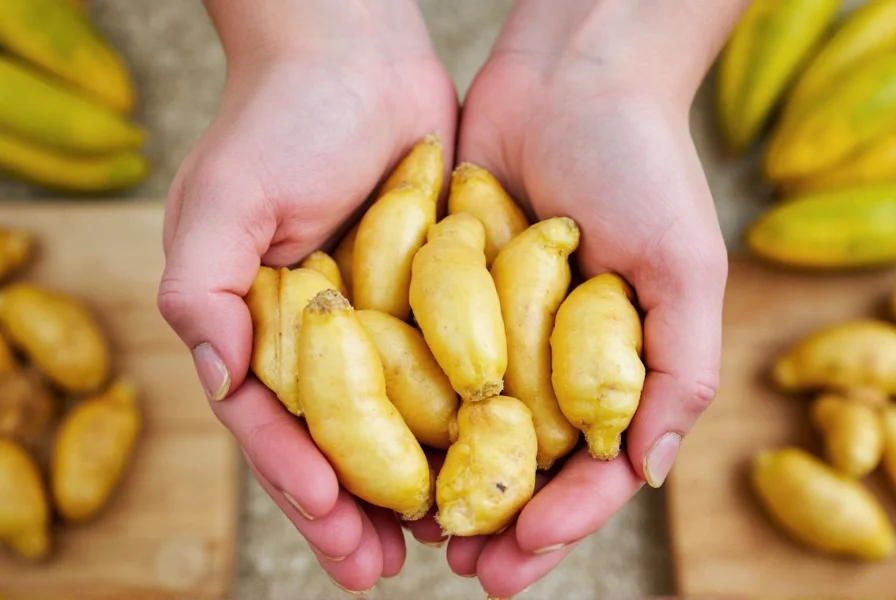Ginger should be harvested 8-10 months after planting when the leaves turn yellow and begin to dry. For mature ginger with maximum flavor and storage potential, wait until the foliage dies back completely, typically in late fall or early winter. Young ginger can be harvested earlier at 4-6 months for a more tender, less fibrous product.
Knowing exactly when to harvest ginger makes all the difference between getting the best flavor, optimal yield, and proper storage potential. Whether you're growing ginger in your backyard garden or in containers, timing your harvest correctly ensures you get the most from your plants.
Understanding Ginger Growth Stages
Ginger (Zingiber officinale) follows a predictable growth cycle that determines the ideal ginger harvest timing. The rhizomes—what we commonly call "ginger root"—develop underground while the plant produces distinctive leafy shoots above ground. Understanding these growth stages is crucial for determining how to know when ginger is ready to harvest.
The typical ginger growth cycle progresses through these key phases:
- Germination (2-4 weeks): Sprouting begins after planting
- Vegetative growth (3-5 months): Leafy shoots develop and multiply
- Rhizome development (4-8 months): Underground rhizomes begin forming and expanding
- Rhizome maturation (8-10 months): Final growth phase before harvest
Key Indicators That Ginger Is Ready for Harvest
Don't rely solely on calendar dates when determining when is ginger ready for harvest. Instead, watch for these visual and physical indicators that signal optimal harvest time:
| Indicator | Mature Ginger (8-10 months) | Young Ginger (4-6 months) |
|---|---|---|
| Foliage Condition | Yellowing and dying back completely | Still green and actively growing |
| Rhizome Characteristics | Firm, well-formed with pronounced "fingers" | Smaller, smoother skin, less fibrous |
| Skin Texture | Thicker, harder to peel | Thin, easily peeled |
| Flavor Profile | Stronger, spicier, more complex | Milder, more delicate, less pungent |
For mature ginger harvest timing, the most reliable indicator is the condition of the foliage. When approximately 80-90% of the leaves have turned yellow and begun to wither, your ginger has likely reached full maturity. This typically occurs 8-10 months after planting, depending on your climate and growing conditions.

Regional Variations in Ginger Harvesting Times
Your geographic location significantly affects ginger harvesting season timing. While the growth cycle remains consistent, local climate conditions determine when you should harvest:
- Tropical regions (USDA zones 9-12): Can harvest year-round but typically in late fall when natural growth cycle completes
- Temperate climates: Harvest before first frost, usually September-November
- Container growers: Can control harvest timing by moving plants indoors
- Cooler climates: May need to harvest earlier if growing season is shortened
In most temperate regions, when to harvest ginger outdoors coincides with the end of the growing season, typically between September and November. The exact timing depends on your planting date and local climate conditions.
Harvesting Young Ginger vs. Mature Ginger
Many gardeners don't realize they have two distinct harvesting options with ginger:
Young Ginger Harvest (4-6 months)
Also called "green ginger" or "spring ginger," this early harvest produces:
- Thinner, more delicate skin that requires no peeling
- Milder, less pungent flavor profile
- Higher moisture content
- Less fibrous texture
- Limited storage potential (1-2 weeks refrigerated)
This option works well if you want ginger for immediate use in salads, stir-fries, or fresh juices where a milder flavor is preferred.
Mature Ginger Harvest (8-10 months)
The standard harvest timing produces:
- Thicker, tougher skin that usually requires peeling
- Full, complex spicy flavor
- Lower moisture content
- More fibrous texture
- Excellent storage potential (several months)
Most commercial growers and home gardeners aiming for long-term storage choose this harvest timing for the best time to harvest ginger for maximum yield and preservation.
Step-by-Step Ginger Harvesting Process
Follow these steps for proper ginger harvesting technique that minimizes damage to your rhizomes:
- Stop watering 1-2 weeks before harvest to allow soil to dry slightly
- Cut back foliage to 2-3 inches above soil level the day before harvesting
- Loosen soil carefully around the plant using a garden fork
- Lift gently from one side, being careful not to pierce rhizomes
- Remove excess soil by hand or with a soft brush (avoid washing with water)
- Cure rhizomes in a shaded, well-ventilated area for 2-3 days
- Store properly in a cool, dark place or prepare for immediate use

Consequences of Improper Harvest Timing
Harvesting at the wrong time significantly impacts your ginger's quality:
Harvesting Too Early
- Smaller rhizome size and lower yield
- Milder flavor that may not develop fully
- Higher moisture content leading to quicker spoilage
- Less developed medicinal compounds
Harvesting Too Late
- Rhizomes may become overly fibrous and woody
- Increased risk of rot in wet conditions
- Potential for rhizomes to sprout new growth
- Reduced storage life due to natural aging process
Post-Harvest Handling for Maximum Shelf Life
Proper handling after harvesting ginger root determines how long your crop remains usable:
- Curing: Allow harvested ginger to cure in a shaded, well-ventilated area for 2-3 days before storage
- Cleaning: Brush off excess soil but avoid washing with water until ready to use
- Storage options:
- Room temperature: 1-2 weeks in a cool, dark place
- Refrigeration: 3-4 weeks when stored in a paper bag
- Freezing: Up to 6 months when peeled and frozen
- Drying: Creates dried ginger with extended shelf life
Common Ginger Harvesting Mistakes to Avoid
Even experienced gardeners make these errors when determining ginger harvest timing:
- Harvesting based solely on calendar dates without checking plant indicators
- Using sharp tools that pierce rhizomes during harvest
- Washing ginger immediately after harvest which promotes mold growth
- Storing in plastic bags which traps moisture and accelerates spoilage
- Leaving ginger in the ground too long in wet conditions leading to rot
Extending Your Ginger Harvest Season
You don't have to harvest your entire ginger crop at once. Consider these strategies for a longer harvest window:
- Staggered harvesting: Remove only what you need, leaving the rest to continue growing
- Container growing: Move pots indoors before frost to extend the growing season
- Partial harvest: Carefully dig around the edges of the plant to remove some rhizomes while leaving others to mature further
- Succession planting: Plant new ginger every 4-6 weeks for continuous harvest
Conclusion
Mastering when to harvest ginger transforms your gardening results, delivering superior flavor, texture, and storage potential. By watching for the natural indicators your plants provide—particularly the condition of the foliage—you'll harvest at precisely the right moment for your intended use. Whether you prefer the delicate flavor of young ginger or the robust character of mature rhizomes, proper timing ensures you get the most from your ginger crop. Remember that local conditions affect ginger harvest timing by region, so adapt these guidelines to your specific growing environment for the best results.
Frequently Asked Questions
How do I know exactly when my ginger is ready to harvest?
The most reliable indicator is the condition of the foliage. When 80-90% of the leaves have turned yellow and begun to wither (typically 8-10 months after planting), your ginger has reached maturity. You can also gently brush away some soil at the edge of the plant to check if the rhizomes have developed well-formed "fingers" with a firm texture.
Can I harvest ginger earlier than 8 months?
Yes, you can harvest young ginger at 4-6 months for a more tender product with thinner skin and milder flavor. This "green ginger" is excellent for immediate use in salads or fresh preparations but has limited storage potential compared to mature ginger.
What happens if I leave ginger in the ground too long?
Leaving ginger in the ground too long, especially in wet conditions, increases the risk of rot. In some climates, over-mature ginger may become overly fibrous or begin to sprout new growth. In freezing temperatures, the rhizomes will likely be damaged or killed by frost.
How late in the season can I harvest ginger?
In temperate climates, harvest ginger before the first hard frost, typically in September-November. In tropical regions where frost doesn't occur, you can harvest year-round but should still follow the plant's natural growth cycle indicators for best quality.
Can I harvest ginger in stages rather than all at once?
Yes, you can practice partial harvesting by carefully digging around the edges of the plant to remove some rhizomes while leaving others to continue growing. This works best with container-grown ginger or in garden beds where you can access the edges without disturbing the entire plant.











 浙公网安备
33010002000092号
浙公网安备
33010002000092号 浙B2-20120091-4
浙B2-20120091-4